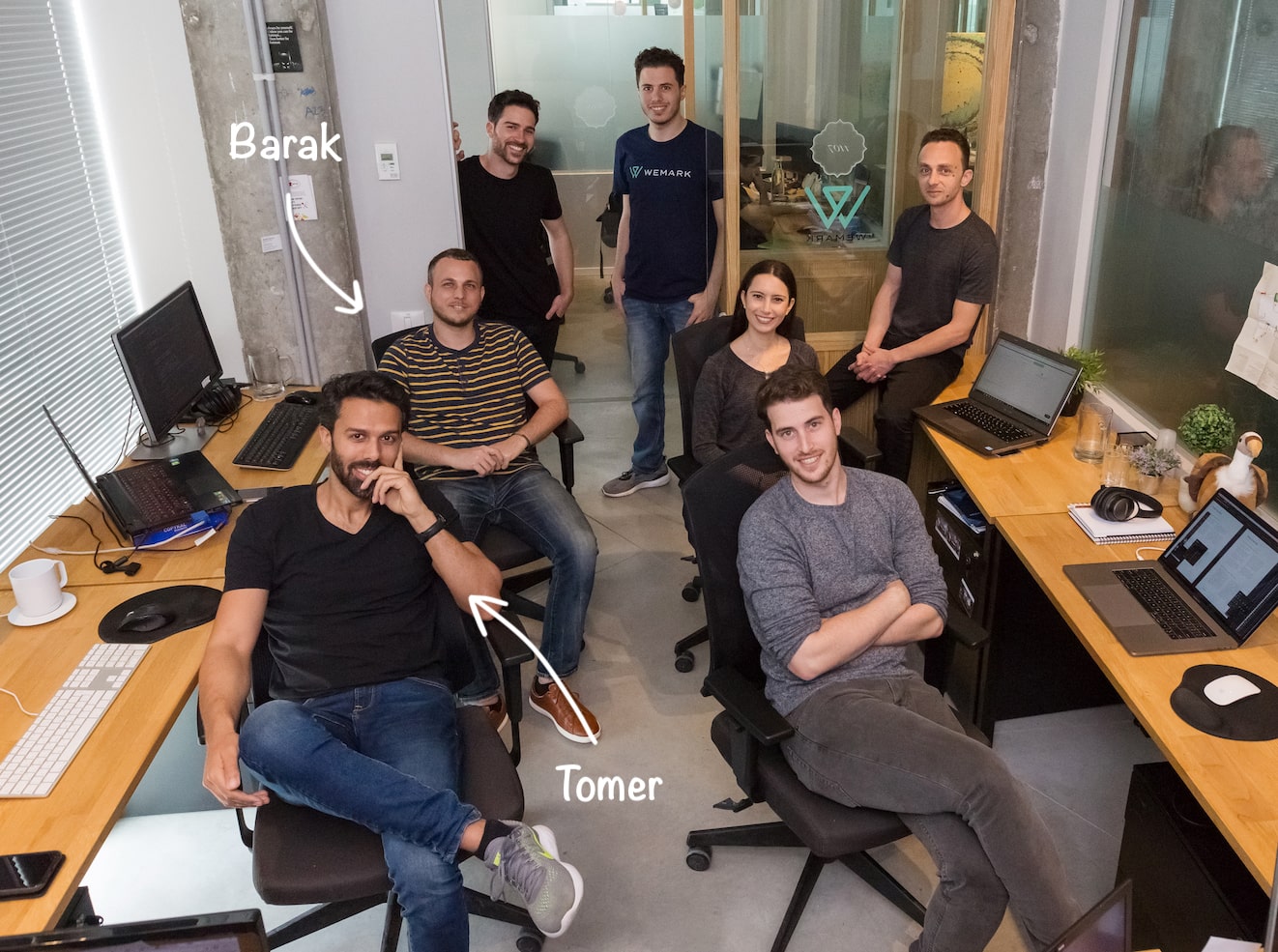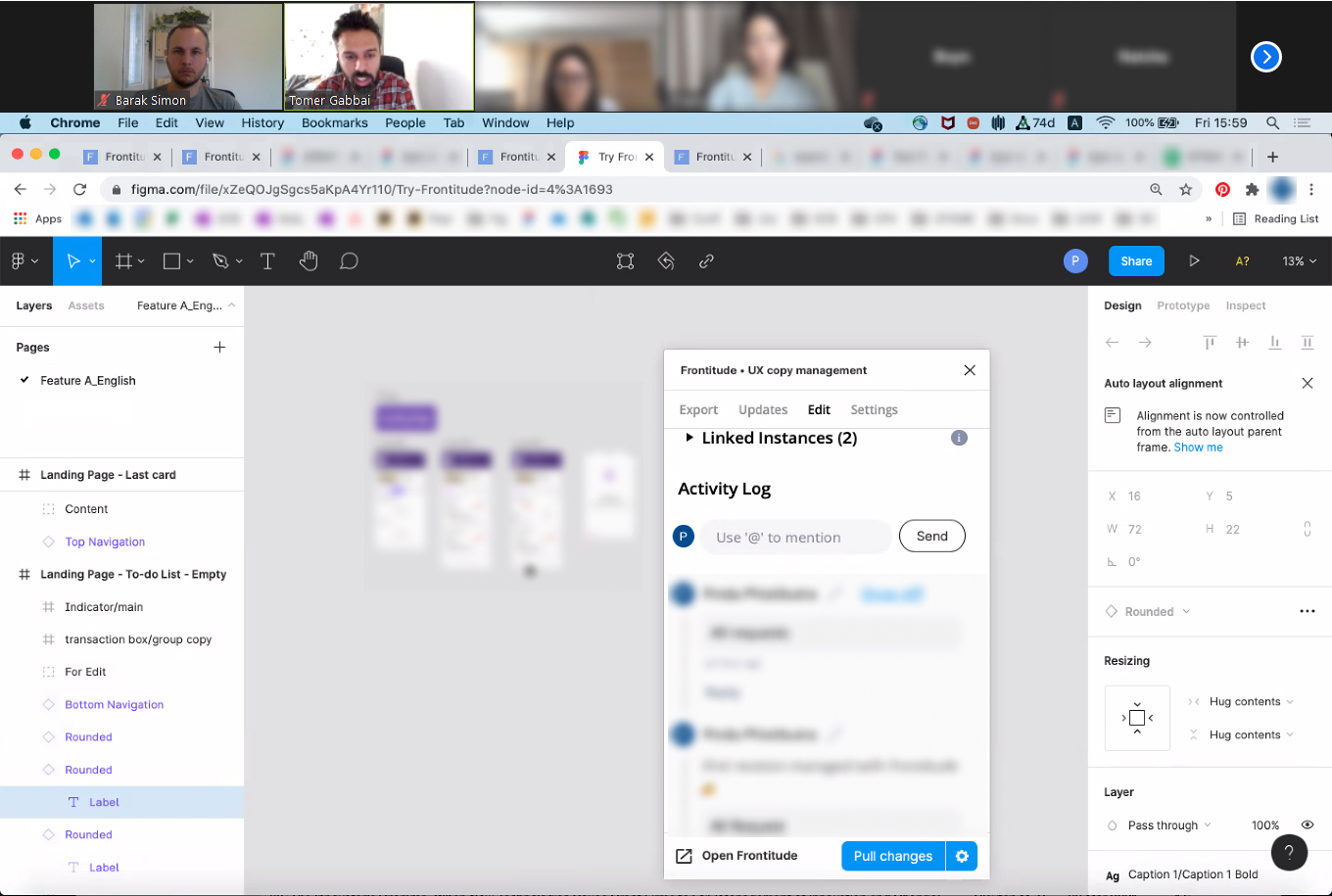“How did you come up with Frontitude?” is probably one of the first questions we are asked by users, investors, employees, advisers, and friends.
I guess this question encompasses a lot about the problem, solution, and the chances to build a product users love. Therefore, I’ve taken the time to compile everything into a single post to share it with you, or anyone interested in our journey.
Early tech beginnings
Barak and I share a passion for technology and products. We’re both engineers at heart and have been computer geeks since childhood.
After I finished my computer science degree, I started working for SAP where I was part of building two enterprise cloud products. After three years working in a big German corporation, I decided to switch to consumer products and ended up joining Wix.com. I worked on the front-end and learned the power of user experience. With more than 100 million users, I observed how A/B testing using different copy variations frequently had a significant impact on the product metrics.
A couple of years later, I started my journey in the local startup scene. I met Barak at an early-stage startup, Wemark, where we led the product development together for more than three years. Barak, an elite intelligence corps unit alumnus, holds a BSc in computer science and math, and brings extensive experience in leading product development teams. For more than seven years, he led the development of mission-critical, real-time systems while acting as both an engineering and product manager.
"At Wix.com, I worked on the front-end and learned the power of user experience. With more than 100 million users, I observed how A/B testing using different copy variations frequently had a significant impact on the product metrics."

The path from engineering to writing UX copy
During our time at Wemark, Barak and I worked on every part of product development. We were encouraged by upper management to write the UX copy and we fell in love with it! As time went by, we noticed many shortcomings in the process of baking copy into the product and changing it in production.
Eventually, we took the time to build a few internal tools. One of them, for example, allowed any team member to load the product in the browser in “edit mode” and submit copy changes to production with a click of a button. The CEO would then have the option to approve it before it was finalized. As a small startup that moved quickly, this saved us immense time and increased our velocity by a magnitude!
Fascinated by the improvements we managed to incorporate into our workflow, we decided to take it a step further and look for a whole solution.
We couldn’t find any.
That’s when we started thinking seriously about developing Frontitude. Once Wemark had finished its operation, we investigated the problem domain further and, after a few months, Frontitude was born.
"During our time at Wemark, Barak and I worked on every part of product development. We were encouraged by upper management to write the UX copy and we fell in love with it!"
Speaking with +100 teams
Equipped with a Lean Startup mindset, we knew that learning about the needs of our users by actually speaking with them is the beginning of building something valuable. We worked with designers, writers, managers, and content strategists from over one hundred companies, ranging from early-stage startups to large corporations and from freelancers to digital agencies, to help us understand what they really need.
As we examined the workflows and processes of product teams, we were astounded to see that most of them struggle with collaborating on UX copy. Whether it was the approval process, maintaining language consistency, or handing the work off to developers, most of them couldn’t find an effective process that worked consistently for their team.
The lack of a proper toolset to collaborate on UX copy and integrate it easily into the product is the power that drives Frontitude.

A new product category
Since UX copy is involved in many internal processes -- research, design, development, documentation, localization, legal, customer support -- we see a new layer takes place in the product development stack that handles the cross-functional work on this type of content.
This layer is seamlessly integrated with the rest of the stack (design tools, codebase, localization platforms, project management tools, etc.) and connects with a single source for this type of content to allow robust version control and consistency throughout the product development lifecycle.
"...we see a new layer takes place in the product development stack, that handles the cross-functional work on this type of content."
The future of Frontitude
We’re excited to embark on the journey of facilitating a new standard for UX copy management that will empower teams that develop digital products, especially in organizations that already understand UX copy is an essential part of delivering a great user experience. We’re sure that the rest of them will follow. :)
You’re welcome to connect with us to discuss the future of product copy management. Email us at hi@frontitude.com, follow us on @frontitude, or book a live demo on our website.

